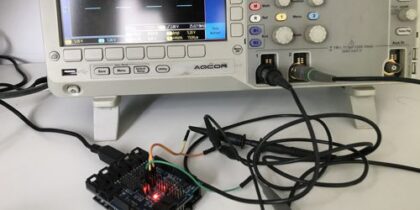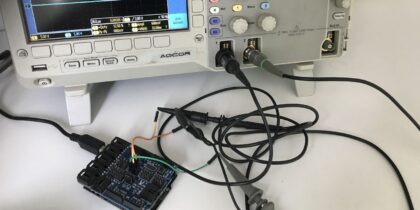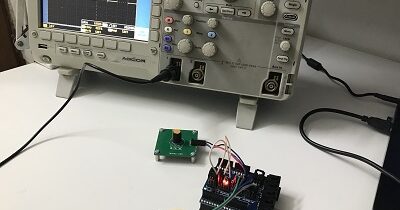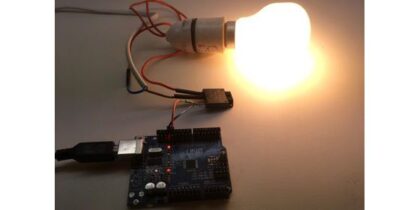Multipurpose Compact 16X2 LCD Shield For Arduino Nano

Compact multipurpose Arduino Nano 16X2 LCD shield can be used to develop various projects, shield provided with various things, LM 35 Temperature sensor, 3X Tactile Switch, Vertical Trimmer Potentiometer, 12V Relay with NO/NC output, power MOSFET, AC714 current sensor and 16X2 LCD.
Arduino Pins LCD
- LCD RS pin to digital pin 12
- LCD Enable pin to digital pin 11
- LCD D4 pin to digital pin 5
- LCD D5 pin to digital pin 4
- LCD D6 pin to digital pin 3
- LCD D7 pin to digital pin 2
- LCD R/W pin to ground
Arduino Pins Various Devices
- Switch 1 Arduino Pin A3
- Switch 2 Arduino Pin D6
- Switch 3 Arduino Pin D7
- Current Sensor ACS714 Arduino Pin A5
- Trimmer Potentiometer Arduino Pin A0
- LM35 Sensor Arduino Pin A4
- Power MOSFET Arduino Pin D9
- Relay Arduino Pin D8
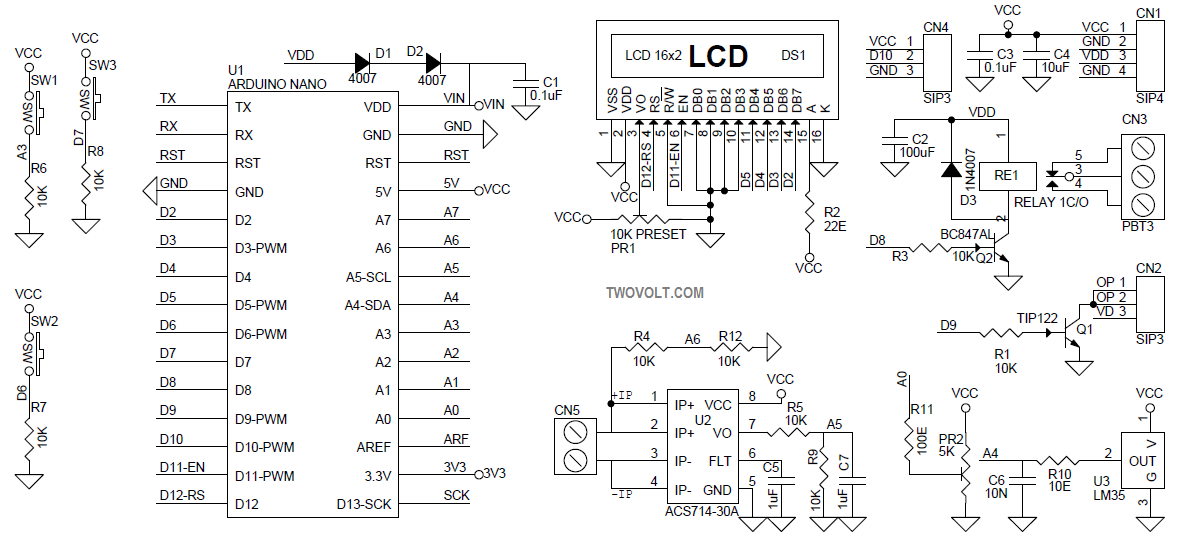
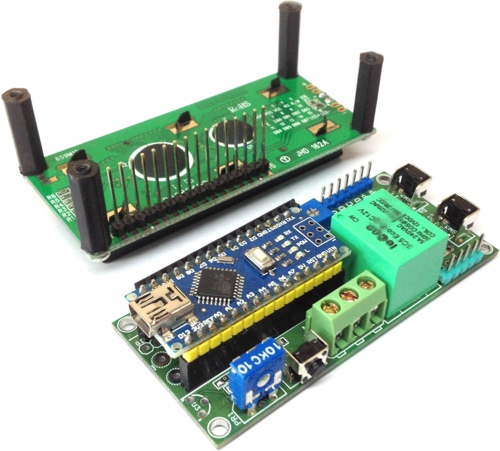
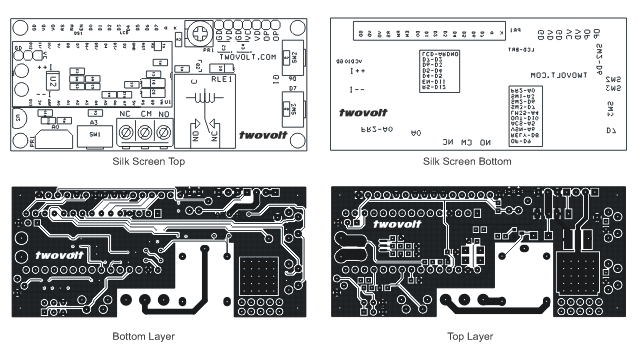
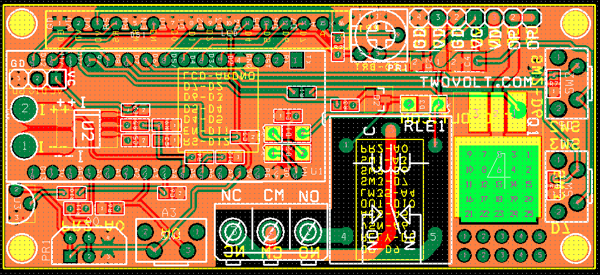

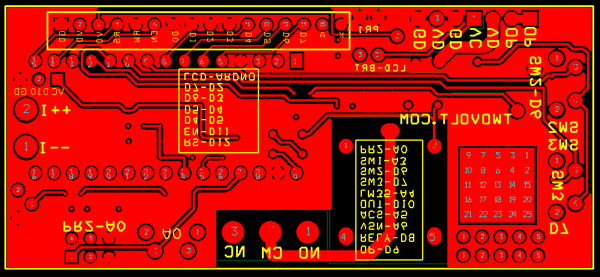
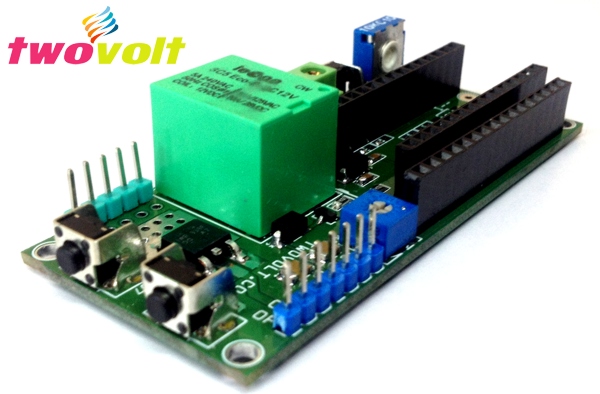

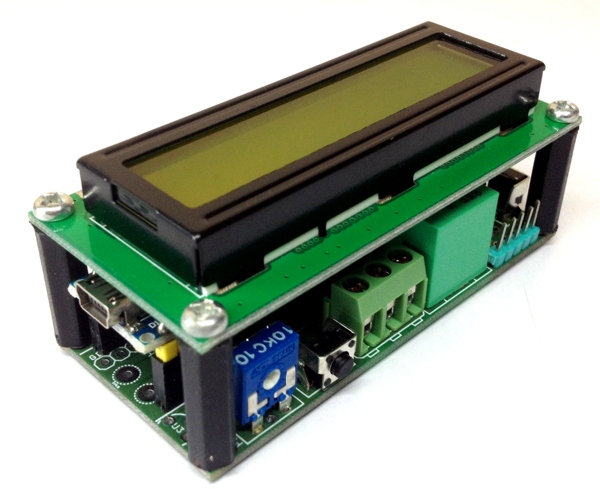
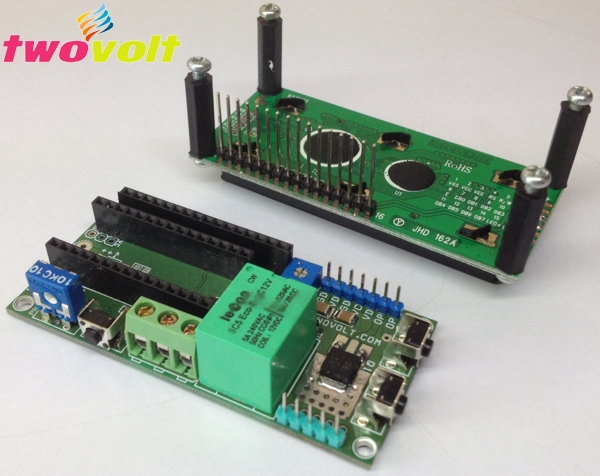
Arduino Code for 16X2 LCD
/*
LiquidCrystal Library – display() and noDisplay()
Demonstrates the use a 16×2 LCD display. The LiquidCrystal
library works with all LCD displays that are compatible with the
Hitachi HD44780 driver. There are many of them out there, and you
can usually tell them by the 16-pin interface.
This sketch prints “Hello World!” to the LCD and uses the
display() and noDisplay() functions to turn on and off
the display.
The circuit:
* LCD RS pin to digital pin 12
* LCD Enable pin to digital pin 11
* LCD D4 pin to digital pin 5
* LCD D5 pin to digital pin 4
* LCD D6 pin to digital pin 3
* LCD D7 pin to digital pin 2
* LCD R/W pin to ground
* 10K resistor:
* ends to +5V and ground
* wiper to LCD VO pin (pin 3)
Library originally added 18 Apr 2008
by David A. Mellis
library modified 5 Jul 2009
by Limor Fried (http://www.ladyada.net)
example added 9 Jul 2009
by Tom Igoe
modified 22 Nov 2010
by Tom Igoe
modified 7 Nov 2016
by Arturo Guadalupi
This example code is in the public domain.
http://www.twovolt.com
*/
// include the library code:
#include <LiquidCrystal.h>
// initialize the library by associating any needed LCD interface pin
// with the arduino pin number it is connected to
const int rs = 12, en = 11, d4 = 5, d5 = 4, d6 = 3, d7 = 2;
LiquidCrystal lcd(rs, en, d4, d5, d6, d7);
void setup() {
// set up the LCD’s number of columns and rows:
lcd.begin(16, 2);
// Print a message to the LCD.
lcd.print(“hello, world!”);
}
void loop() {
// Turn off the display:
lcd.noDisplay();
delay(500);
// Turn on the display:
lcd.display();
delay(500);
}

